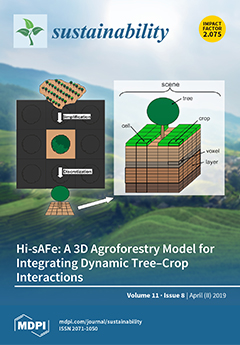Urbanization is a three-dimensional process including population, spatial, and economic changes. The coordination among the three dimensions is the key to sustainable urban development. Here, a population-land-industry index system of urbanization is constructed, and the degree of coupling and mutual feedback among population
[...] Read more.
Urbanization is a three-dimensional process including population, spatial, and economic changes. The coordination among the three dimensions is the key to sustainable urban development. Here, a population-land-industry index system of urbanization is constructed, and the degree of coupling and mutual feedback among population urbanization, land urbanization, and industrial urbanization are analyzed. The urbanization patterns and their spatiotemporal variation are identified. The results show that: (1) Population and land urbanization proceeded slowly in Gansu Province and their trends were similar, whereas industry urbanization proceeded faster than the two. From a spatial perspective, population, land, and industrial urbanization levels (
PUi,
LUi, and
IUi) decreased from southwest to northeast. The coupling degree of population, land, and industrial urbanization increased from 1998 to 2016 and showed significant spatial variation, decreasing from northwest to southeast. (2) Population, land, and industry all play a role in urbanization.
PUi was significantly and positively correlated with
LUi. However, there was no significant correlation between
IUi and
PUi and between
IUi and
LUi. The improvement of
PUi,
LUi, and
IUi effectively promoted the coupling degree of population, land, and industrial urbanization. (3) Seven urbanization patterns were identified in Gansu Province and evaluation units with the same urbanization pattern tended to be spatially close to each other.
IUi >
PUi >
LUi (IX),
IUi >
LUi >
PUi (X) and
IUi >
PUi =
LUi (XI) were the dominant urbanization patterns. There was crisscross distribution of various urbanization patterns and, thus, it was not easy to observe the agglomeration center of certain urbanization pattern. (4) The urbanization pattern of the same evaluation unit changed with time. This change was mainly reflected in the change of relationship between population and land urbanization. Urbanization pattern changed more significantly in 2008–2016 than in 1998–2008. The changes were dominant by IX→XI, X→XI, XI→IX, and XI→X.
Full article





